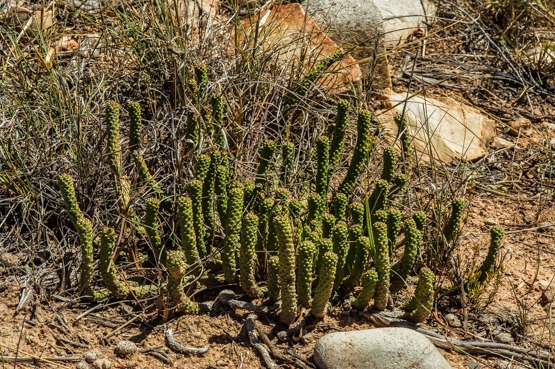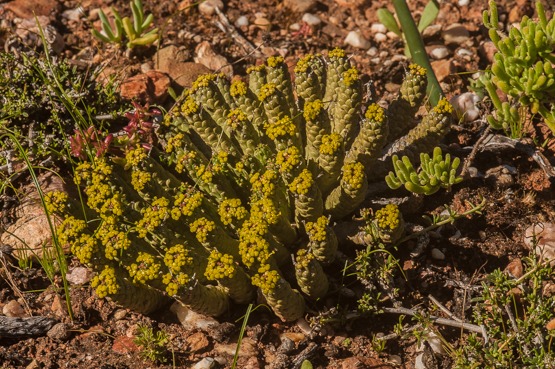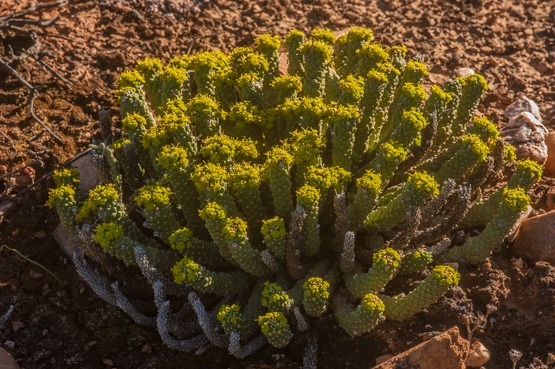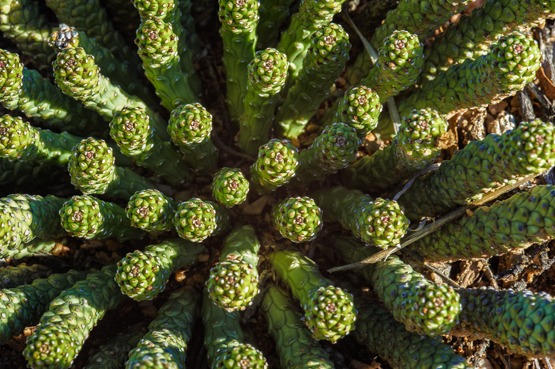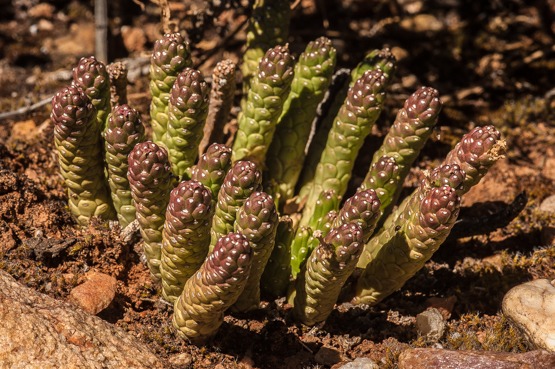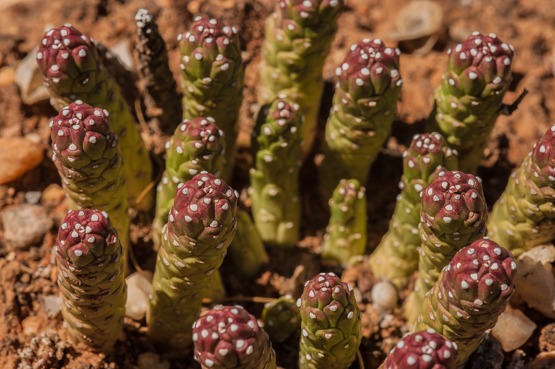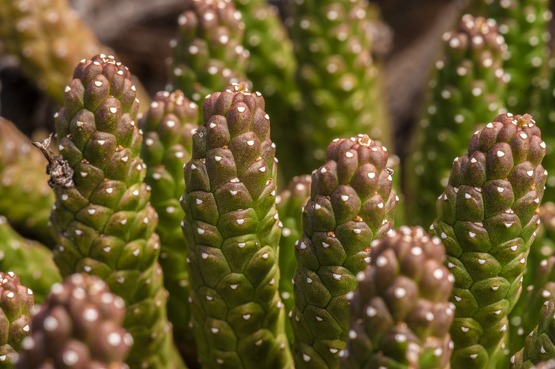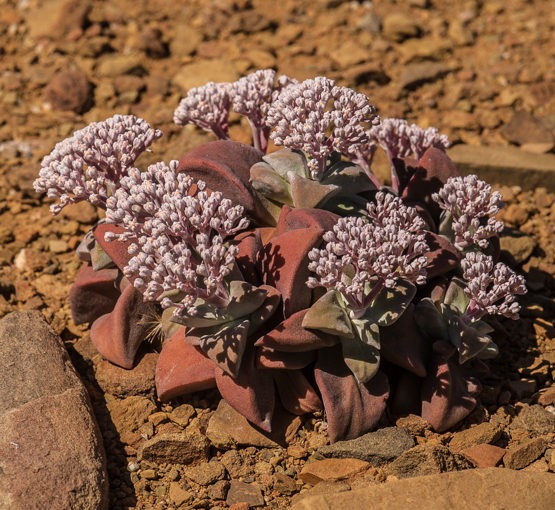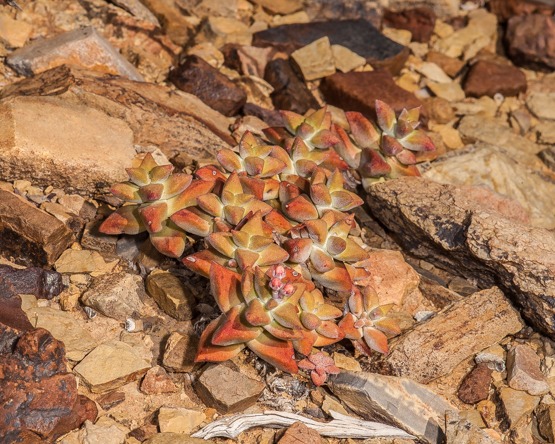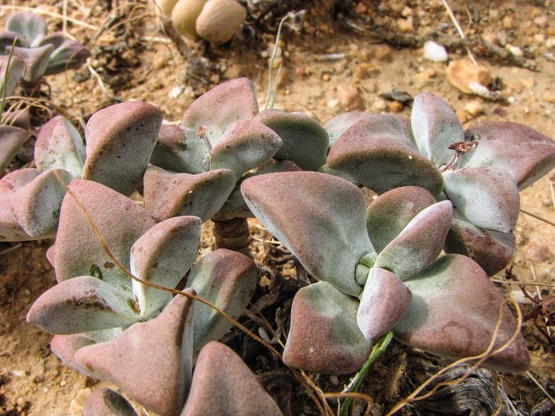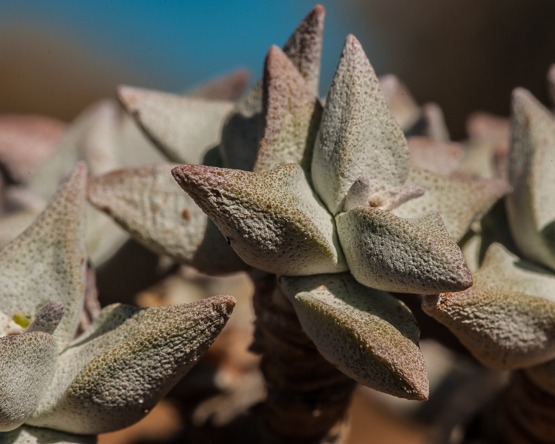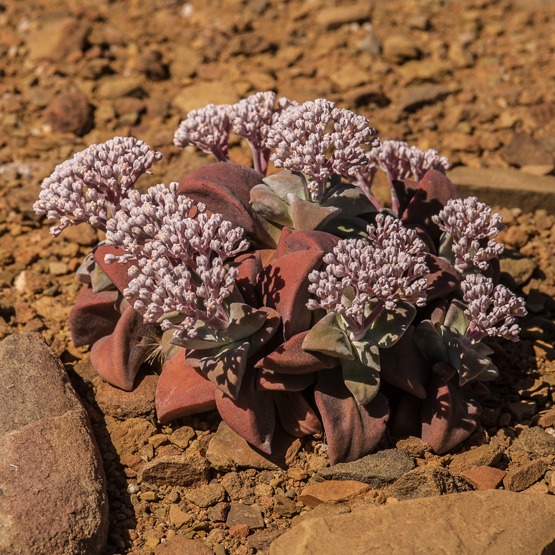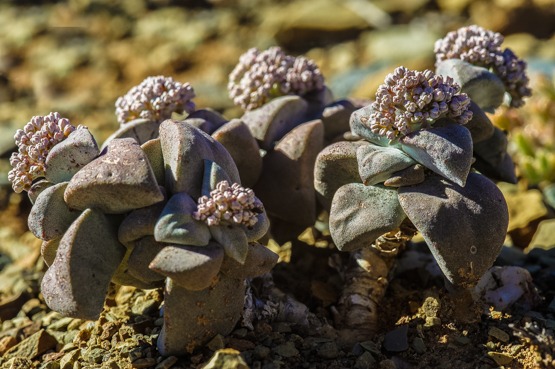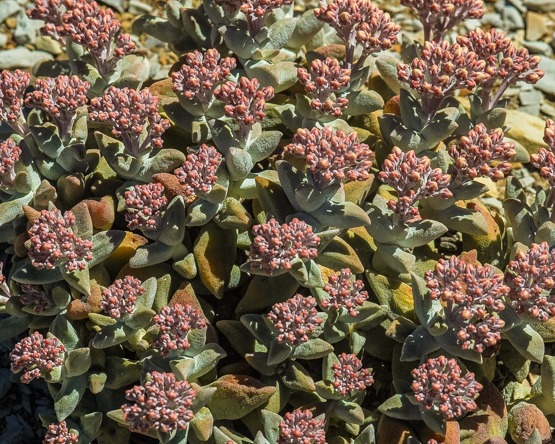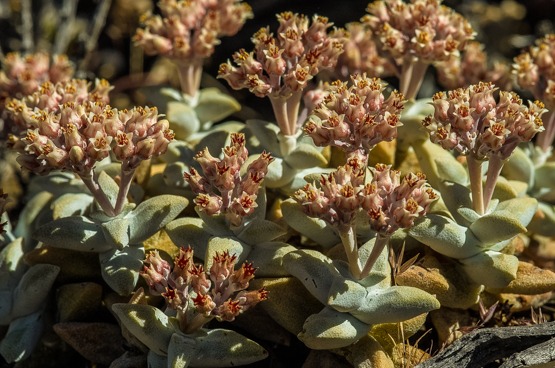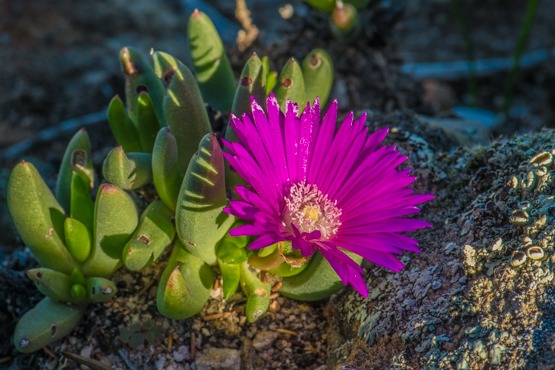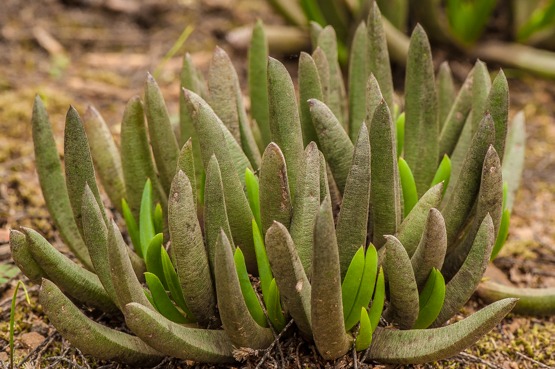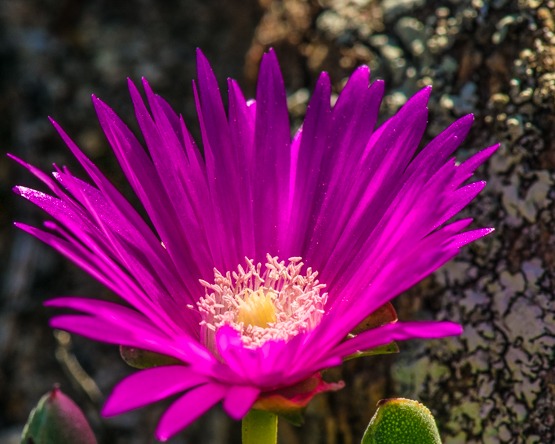Only known from 4 localities between Calitzdorp and De Rust in the Little Karoo, this species is highly endangered by habitat loss and degradation (caused by ostrich farming and quarrying as well as soil erosion and urban expansion). The situation is further exacerbated by ruthless collecting.
It is a member of the medusoid (caput-medusae) group: the plant consists of a large caudex, an underground tuber and rings of erect to spreading branches which are 3-12 cm long and to 2 cm thick.
The species is said to be close to E. fortuita occurring further west in the Ladismith area.
